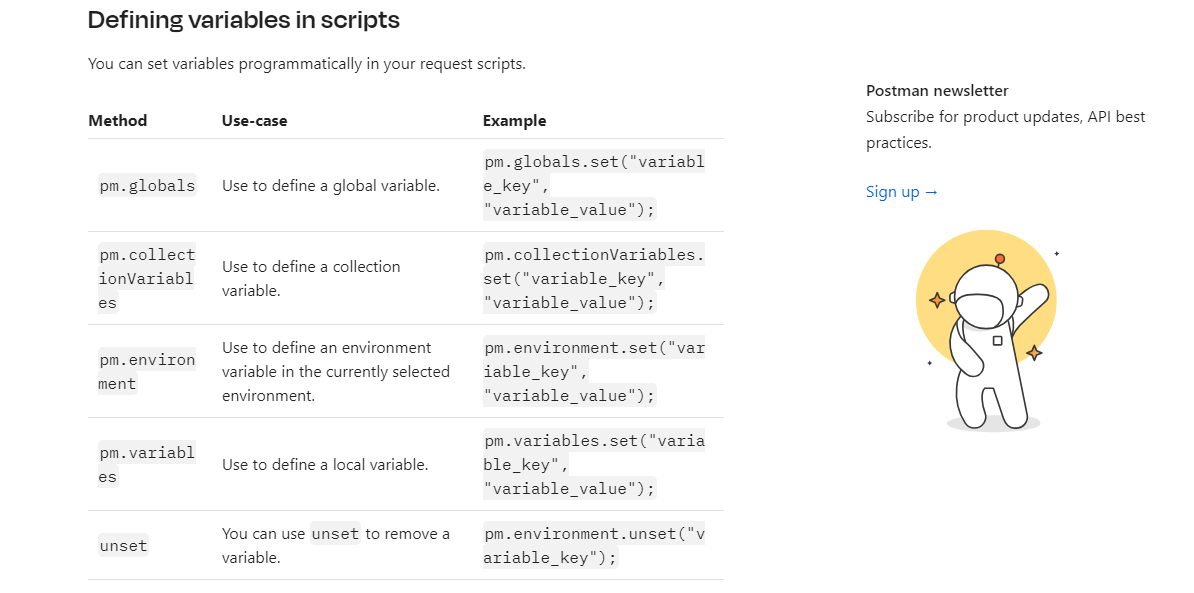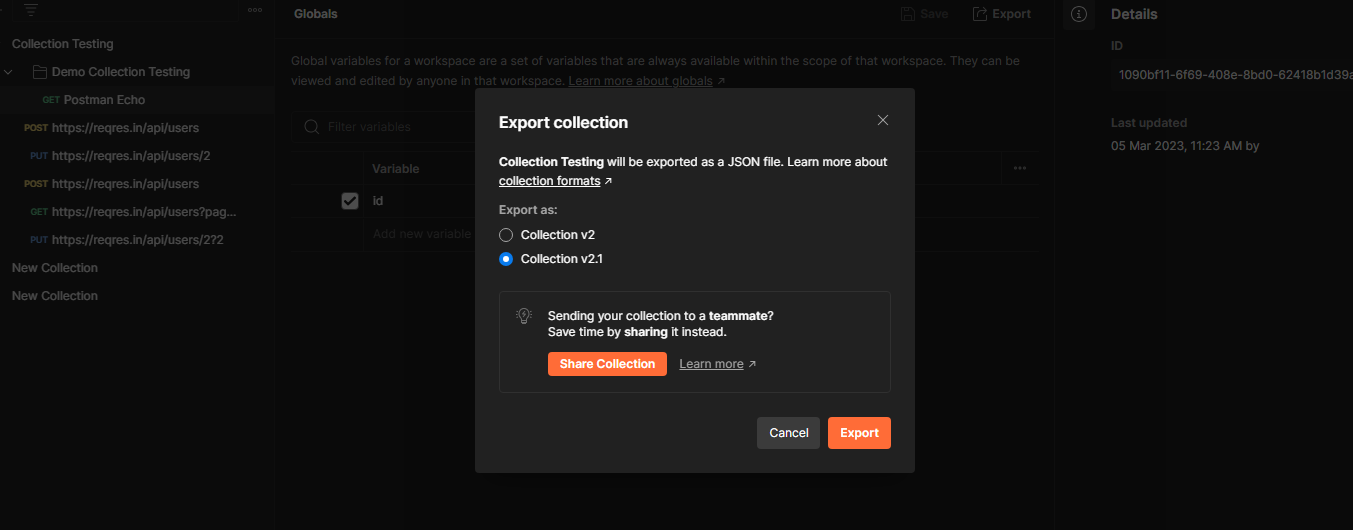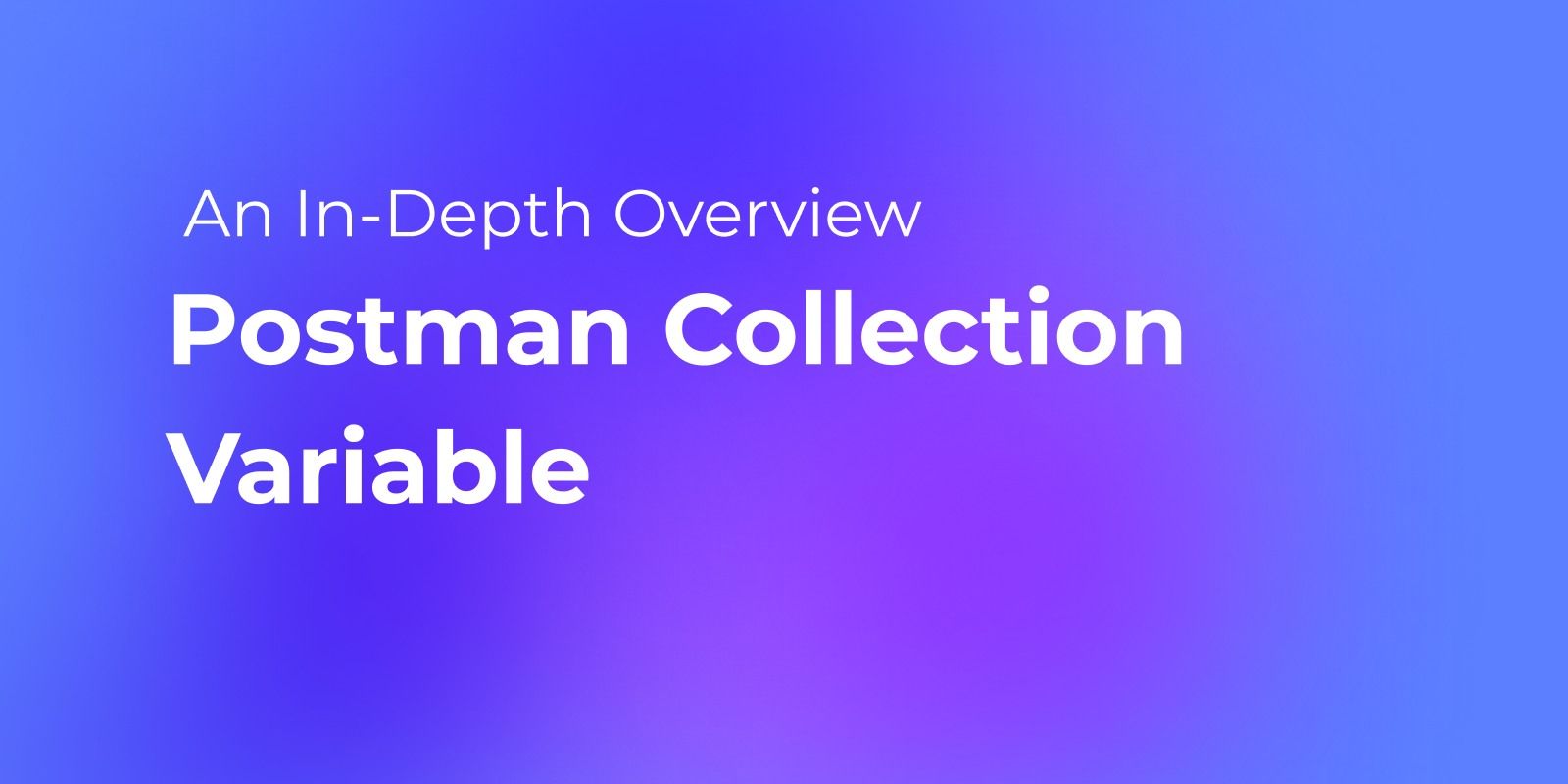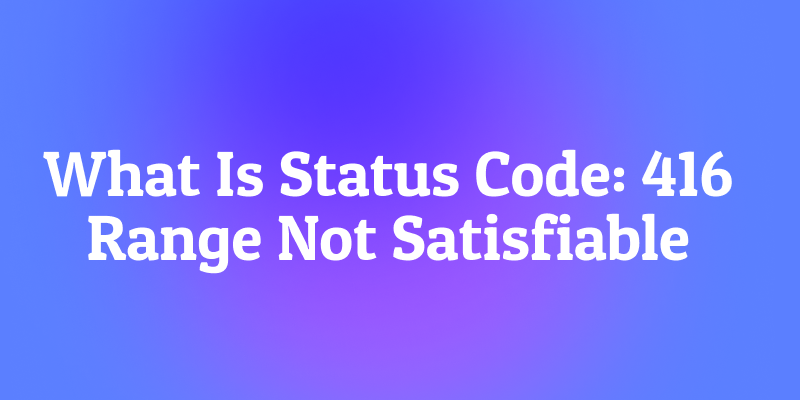API testing has become an integral part of modern software development, ensuring the reliability and functionality of applications. As developers strive for efficiency and productivity, tools that organize, document, and automate API workflows have become indispensable.
Postman, a popular choice among developers, offers a robust set of features, with collection variables standing out as a key asset. However, as projects grow in complexity and teams expand, a new challenge arises: the need for more resources to run collections in Postman.

In this article, we will delve into the world of Postman collection variables, exploring their types, understanding their scoping, and addressing their limitations. Furthermore, we will introduce Apidog as a potential Postman alternative tool, providing developers with greater control and flexibility in their API testing process.
What are Postman Collection Variables?
Postman variables act as dynamic placeholders for data that you want to reuse in your requests. These are key-value pairs where the key represents the variable name, and the value represents the data you want to save under that name. These variables can store and reuse values across different APIs, thus reducing redundancy and minimizing errors in your API testing process.
A common use case for Postman variables is when you need to use the same value across multiple requests - for instance, an API base URL or an access token. By saving these values as variables, you can conveniently reference them in various parts of your requests, such as the URL, headers, pre-request script, or body. This makes your APIs more maintainable and ensures consistency across your tests.

Another powerful aspect of Postman variables is the ability to group them using environments. An environment in Postman is a set of variables with different values depending on the environment. This allows you to easily switch contexts in your testing process, thus promoting environment-specific testing without manually changing the data in your requests.
Variable Types in Postman
There are two types of variables in Postman:
- Default Type: These are plain text variables with no additional properties.
- Secret Type: These variables hide their initial and current values in all workspaces, similar to passwords. They're used to prevent unintentional disclosure of sensitive data.

Variable Scopes in Postman
Postman offers a range of variable scopes that allow developers to set variables for collection according to their specific needs. Understanding these scopes is essential for effectively utilizing Postman Collection Variables in API testing. Let's dive deeper into each scope, including their syntax and commands.
Global Variable:
Global Variables have the broadest scope and can be accessed throughout the workspace. They are ideal for values shared across requests and collections. Here are some examples of when to use global variables:
- API Base URL: If your requests share the same base URL, you can define it as a global variable. This allows you to update the base URL in one place, ensuring consistency across all requests.
- Authentication Tokens: Storing authentication tokens as global variables enable easy reuse and management, as you can reference them in multiple requests without duplicating code.
- Common Headers: If you have headers that need to be included in all requests, such as authorization headers or content-type headers, you can define them as global variables for streamlined maintenance.
Syntax:
Set Global Variable: pm.globals.set("variable_name", "variable_value");
Get Global Variable: var variable_value = pm.globals.get("variable_name");
Unset Global Variable: pm.globals.unset("variable_name");
Example:
// Set up Global Variable
pm.globals.set("base_url", "https://api.example.com");
// Access Global Variable
var base_url = pm.globals.get("base_url");
// Unset Global Variable
pm.globals.unset("base_url");
Collection Variables:
Collection Variables are specific to a particular collection and are accessible across all requests within that collection, regardless of the selected environment. Here are some examples of when to use collection variables:
- Collection-Specific Data: If certain data values are relevant only within a specific collection, such as test-specific data or collection-level configurations, collection variables provide a convenient way to store and manage them.
- Collection-Wide Environment Configuration: If a collection requires specific environment configurations, such as different API keys or endpoint URLs for different collections, using collection variables ensures that the values are consistent throughout the collection.
Syntax
Set Collection Variable: pm.collectionVariables.set("variable_name", "variable_value");
Get Collection Variable: var variable_value = pm.collectionVariables.get("variable_name");
Unset Collection Variable: pm.collectionVariables.unset("variable_name");
Example:
// Set up Collection Variable
pm.collectionVariables.set("auth_token", "abcd1234");
// Access Collection Variable
var auth_token = pm.collectionVariables.get("auth_token");
// Unset Collection Variable
pm.collectionVariables.unset("auth_token");
Environment Variables:
Environment Variables are tied to a specific environment, such as local, staging, or production. Their values change as you switch between different environments in Postman. Here are some examples of when to use environment variables:
- Environment-Specific Configurations: When working with different environments, such as local, development, and production, you can define environment variables to store environment-specific values like database credentials, server URLs, or API keys.
- Simulating Test Environments: If you need to replicate specific test scenarios with varying configurations, environment variables allow you to switch between different setups without modifying individual requests.
Syntax
Get Environment Variable: var variable_value = pm.environment.get("variable_name");
Unset Environment Variable: pm.environment.unset("variable_name");
Example:
// Set up Environment Variable
pm.environment.set("api_key", "xyz789");
// Access Environment Variable
var api_key = pm.environment.get("api_key");
// Unset Environment Variable
pm.environment.unset("api_key");
Local Variables:
Local Variables, also known as temporary variables, are accessible only within a specific request script. Their scope is limited to the current request or collection and is no longer available once the execution completes. Here are some examples of when to use local variables:
- Calculated Values: If you need to perform calculations or transformations within a request, you can store intermediate results in local variables for subsequent use in the same request.
- Request-Specific Data: When a request requires unique data that is not relevant to other requests, local variables offer a concise and isolated way to store such data temporarily.
Syntax
Set Local Variable: pm.variables.set("variable_name", "variable_value");
Get Local Variable: var variable_value = pm.variables.get("variable_name");
Unset Local Variable: pm.variables.unset("variable_name");
Example:
// Set up Local Variable
pm.variables.set("response_code", 200);
// Access Local Variable
var response_code = pm.variables.get("response_code");
// Unset Local Variable
pm.variables.unset("response_code");
You can effectively manage and reuse variables in their API testing workflows by understanding and utilizing these variable scopes in Postman. Whether leveraging Global Variables for workspace-wide consistency or utilizing Environment Variables for environment-specific configurations, mastering these scopes empowers developers to create dynamic and efficient API tests.

Postman's Collection Run Limit: A Close Look
The efficiency that Postman promises with its Collection Variables comes with a catch — a limit on the number of times a collection can be executed within a given period. The Collection Run limit is imposed to prevent misuse of the Postman API and maintain stability for all users. However, introducing these limits has drastically impacted the workflows of developers, particularly those working on larger projects or within extensive teams.
Postman's Limitation: The Impact on API Developers
The implications of Postman's Collection Run limit extend beyond just a reduced number of runs. It has compelled developers to rethink their choice of API testing tools, especially since the limit applies to all collections within an account, not just individual ones. Consequently, users managing multiple collections requiring frequent runs must upgrade to higher Postman plans or seek alternatives.
Postman User Discontentment: A Growing Trend
Introducing the Collection Run limit has sparked considerable frustration among loyal Postman users. The recent changes to Postman's pricing plans, particularly the alignment of run limits for the free tier and the basic plan have received widespread criticism. Users argue that the limit of 25 runs on the basic plan could be more reasonable, leading to calls for Postman to reconsider its changes.
The Hunt for Better API Testing Tools: Beyond Postman
Developers are increasingly exploring alternative API testing tools as dissatisfaction with Postman's changes grows. One such tool that stands out in this search is Apidog. Offering more flexibility and no restrictions on the number of runs, Apidog emerges as a viable alternative for developers seeking more control and less restriction in their API testing process.
For those seeking a solution with no collection run limit, Apidog may provide a suitable alternative.
Meet Apidog: The Rival to Postman
Apidog emerges as a powerful competitor to Postman in the API testing landscape. With a robust testing framework, automation features, real-time feedback, and comprehensive test reports, it is a versatile tool that surpasses the restrictions imposed by Postman's Collection Run limit. Apidog's integration capabilities with other testing tools further enhance its appeal, presenting it as a comprehensive API development, testing, and management solution.
Advantages of Apidog: Outshining Postman's Limitations
The unrestricted nature of Apidog sets it apart from Postman. With no limit on the number of runs, developers enjoy the freedom to run their collections as frequently as required. This freedom, coupled with the platform's ability to streamline the checking process, enables developers to quickly identify and resolve issues, resulting in a more productive development process.
Exporting Your Postman Collection
To begin the migration process, you will need to export your Postman Collection. Postman Collections are groups of saved requests that can be shared with other users, containing requests, tests, scripts, and more, which aid in the organization, documentation, and automation of API testing workflows.
- Open Postman and navigate to the collection you wish to export.
- Click on the "..." next to the collection name, and select "Export" from the dropdown menu.

- A dialog box will appear, asking you to select the version of your collection. Here, it is crucial to select "Collection v2.1". This ensures that all queries, directories, and details about your environment are included in the exported file. It will also preserve request-specific information such as logs, query parameters, and content.
- After selecting "Collection v2.1", click the "Export" button.

- Choose a location on your computer to save the exported file and click "Save."

Following these steps, you will have successfully exported your Postman Collection and are ready to import it into Apidog.
Importing Collection into Apidog
After exporting your Postman Collection, the next step is to import it into Apidog. Apidog is a robust testing tool that allows developers to create, test, and manage APIs efficiently without any restrictions.
- Log in to your Apidog account. If you still need an account, you must create one.
- Once logged in, navigate to "Settings" from the left menu and select "Import."
- In the import section, select "Postman" and upload the file you exported from Postman.
- Click the "Confirm" button to complete the import process.

After these steps, you can view and control the imported collections in Apidog. Here, you can easily add, update, and delete requests and group requests, into folders. This will help you organize your API testing workflow better.
Collaborating and Managing Content with Apidog
Apidog offers efficient collaboration and content management within teams. It allows for discussions, additions, and modifications to the collection, making it an excellent tool for large projects with multiple participants.
- Review your imported collection. You can edit API information, update the order of requests, or delete unnecessary items.
- Use the collaboration features of Apidog. You can share your collections with team members, and they can make changes or add comments.
- Utilize Apidog's version control feature. This feature provides a reliable backup and facilitates easy switching between different collection versions. It's a useful feature when you want to revert changes or try different approaches in your API testing workflow.

Testing Your Collection in Apidog
After importing and organizing your collection in Apidog, you can start testing.
- Navigate to your imported collection in Apidog.
- You can test your collection with data inputs, authentication techniques, and API versions. You can also ensure proper error handling in the "Testing environment" section.
- Run your tests and check the results. Apidog offers a "Test Reports" section where you can access detailed reports of your test results.

Testing in Apidog helps you ensure your API is working as expected, and you can quickly identify and resolve any issues that may arise during the testing process.
Conclusion:
Postman collection variables provide a powerful solution for efficient API testing, enabling developers to organize and reuse data effectively. However, the introduction of the Collection Run limit has posed challenges for developers, leading them to explore alternatives like Apidog.
With its unrestricted capabilities, Apidog offers greater control and flexibility in API testing. Embracing these tools and evolving testing practices is crucial for delivering high-quality applications and ensuring productivity in software development. Stay informed, leverage collection variables, and explore alternative options for optimal API testing.



